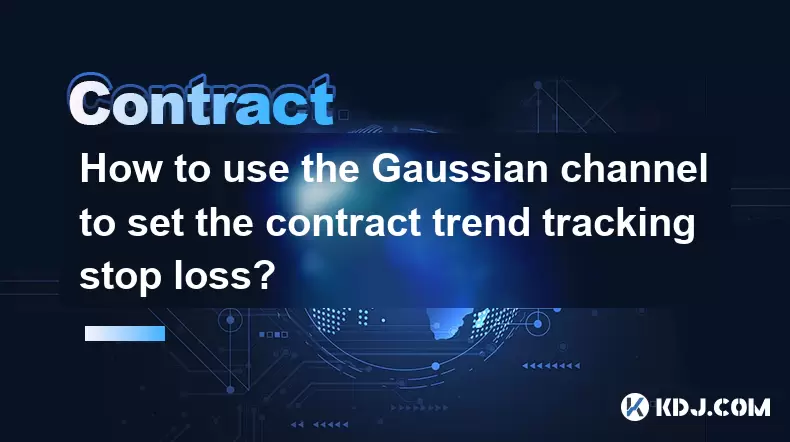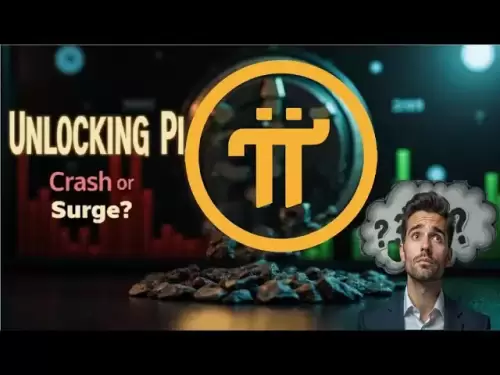-
 Bitcoin
Bitcoin $105,734.0170
-1.51% -
 Ethereum
Ethereum $2,414.7328
-3.26% -
 Tether USDt
Tether USDt $1.0002
0.00% -
 XRP
XRP $2.1748
-2.62% -
 BNB
BNB $647.5663
-1.72% -
 Solana
Solana $148.1710
-3.81% -
 USDC
USDC $0.9999
-0.01% -
 TRON
TRON $0.2799
-0.02% -
 Dogecoin
Dogecoin $0.1586
-4.17% -
 Cardano
Cardano $0.5440
-5.03% -
 Hyperliquid
Hyperliquid $37.0680
-6.59% -
 Bitcoin Cash
Bitcoin Cash $501.2052
-4.01% -
 Sui
Sui $2.6846
-3.47% -
 Chainlink
Chainlink $12.8488
-3.38% -
 UNUS SED LEO
UNUS SED LEO $8.9480
-1.51% -
 Avalanche
Avalanche $17.2059
-3.87% -
 Stellar
Stellar $0.2270
-4.75% -
 Toncoin
Toncoin $2.7889
-3.93% -
 Shiba Inu
Shiba Inu $0.0...01126
-1.76% -
 Litecoin
Litecoin $83.6893
-3.36% -
 Hedera
Hedera $0.1445
-4.49% -
 Monero
Monero $312.4014
-2.58% -
 Dai
Dai $1.0000
0.00% -
 Ethena USDe
Ethena USDe $1.0001
-0.01% -
 Polkadot
Polkadot $3.2920
-3.32% -
 Bitget Token
Bitget Token $4.4629
-1.81% -
 Uniswap
Uniswap $6.5386
-8.42% -
 Aave
Aave $260.3780
-6.01% -
 Pepe
Pepe $0.0...09308
-4.54% -
 Pi
Pi $0.4864
-3.04%
Setting stop loss and take profit on Binance contract
By utilizing stop loss and take profit orders on Binance Contract, traders can effectively manage potential losses and maximize profits while trading cryptocurrencies, ensuring a more controlled and strategic approach.
Nov 20, 2024 at 06:34 am

Setting Stop Loss and Take Profit on Binance Contract
Introduction
Trading cryptocurrencies on Binance Contract, a derivatives platform, involves managing both potential profits and losses. Stop loss and take profit orders are crucial tools in this regard, allowing traders to automate the exit from positions based on predefined conditions. This comprehensive guide will delve into the intricacies of setting stop loss and take profit orders on Binance Contract, empowering traders with the knowledge to mitigate risks and maximize returns.
What is a Stop Loss Order?
A stop loss order is an instruction to Binance Contract to close a position automatically if the market price moves against the trader's intended direction beyond a specified level. By placing stop loss orders, traders can limit potential losses and prevent substantial drawdowns.
How to Set a Stop Loss Order on Binance Contract
- Identify the Trigger Price: Determine the price level at which you want the stop loss order to be triggered. This level should represent the maximum acceptable loss you are willing to tolerate.
- Open the Position Panel: Navigate to the Binance Contract trading interface and select the "Stop Loss" tab within the position panel.
- Input Parameters: Enter the trigger price, the quantity to be closed, and the order type (Limit, Market, or Stop Market).
- Activate the Order: Toggle the "Use Stop Loss" switch to "ON" to activate the stop loss order.
- Monitor the Position: Keep track of the position's progress and adjust the stop loss order as market conditions change.
What is a Take Profit Order?
A take profit order is a directive to Binance Contract to close a position automatically when the market price reaches a predefined level in the trader's favor. By setting take profit orders, traders can lock in profits and ensure they maximize gains.
How to Set a Take Profit Order on Binance Contract
- Identify the Target Price: Determine the price level at which you want to secure profits. This level should represent your target return on investment.
- Open the Position Panel: Navigate to the Binance Contract trading interface and select the "Take Profit" tab within the position panel.
- Input Parameters: Enter the target price, the quantity to be closed, and the order type (Limit, Market, or Stop Market).
- Activate the Order: Toggle the "Use Take Profit" switch to "ON" to activate the take profit order.
- Monitor the Position: Regularly monitor the position's progress and adjust the take profit order as market conditions adjust.
Best Practices for Setting Stop Loss and Take Profit Orders
- Consider the Market Volatility: The volatility of the cryptocurrency market can influence the placement of stop loss and take profit orders. Higher volatility requires wider stop loss levels and tighter take profit levels.
- Calculate the Risk-Reward Ratio: Ensure that the potential profit (take profit level minus entry price) outweighs the potential loss (entry price minus stop loss level).
- Use Trailing Stop Loss and Take Profit: Allow the stop loss and take profit levels to adjust automatically as the market price moves in the desired direction, trailing the position.
- Re-evaluate Orders Regularly: Regularly review and adjust stop loss and take profit orders based on market conditions and changes in your risk tolerance.
- Avoid Emotional Trading: Set orders objectively based on market analysis, not based on fear or greed.
- Use Limit Orders for Precision: Limit orders provide greater control over the execution price and prevent slippage during volatile market conditions.
- Consider Multiple Orders: Place multiple stop loss and take profit orders at different levels to capture partial profits or mitigate risks at various market scenarios.
- Use Stop Limit Orders for Protection: Stop limit orders combine the protection of a stop loss order with the precision of a limit order, ensuring order execution only if the market price breaches a specific level.
- Be Aware of Funding Fees: Binance Contract charges funding fees on positions held overnight. Plan your orders accordingly to minimize the impact of these fees.
Disclaimer:info@kdj.com
The information provided is not trading advice. kdj.com does not assume any responsibility for any investments made based on the information provided in this article. Cryptocurrencies are highly volatile and it is highly recommended that you invest with caution after thorough research!
If you believe that the content used on this website infringes your copyright, please contact us immediately (info@kdj.com) and we will delete it promptly.
- Instant Payments, Fintech, and USDC Stablecoins: A New Era of Finance?
- 2025-07-02 18:30:12
- XRP, Ripple Labs, and Escrow: Decoding the Latest Moves
- 2025-07-02 18:30:12
- Crypto Summit, White House, and Bitcoin Solaris: A New Era?
- 2025-07-02 18:50:12
- DeFi, Aptos, and Token Generation: A New Era?
- 2025-07-02 18:50:12
- Peter Schiff, Bitcoin, and the Gold Hedge: A Contrarian's Crypto Turn?
- 2025-07-02 19:10:13
- Paddington Coin Mania: Rare Find or Fool's Gold? The £10K Question!
- 2025-07-02 19:10:13
Related knowledge

How to use the price slope to filter the false breakthrough signal of the contract?
Jun 20,2025 at 06:56pm
Understanding the Concept of Price Slope in Contract TradingIn contract trading, especially within cryptocurrency derivatives markets, price slope refers to the rate at which the price changes over a specific time period. It helps traders assess the strength and sustainability of a trend. A steep slope may indicate strong momentum, while a shallow slope...

How to determine the expected volatility of the contract through the volatility cone?
Jun 19,2025 at 12:28pm
Understanding the Basics of Volatility in Cryptocurrency ContractsIn the realm of cryptocurrency trading, volatility is a key metric that traders use to assess potential risk and reward. When dealing with futures contracts, understanding how volatile an asset might become over time is crucial for position sizing, risk management, and strategy developmen...

How to formulate a contract intraday trading plan in combination with the pivot point system?
Jun 21,2025 at 03:42pm
Understanding the Basics of Pivot Points in Cryptocurrency TradingPivot points are technical analysis tools used by traders to identify potential support and resistance levels. These levels are calculated using the previous day's high, low, and closing prices. In the context of cryptocurrency trading, where markets operate 24/7, pivot points help trader...

How to adjust the contract position ratio through the price fluctuation entropy?
Jun 22,2025 at 11:42am
Understanding Price Fluctuation Entropy in Cryptocurrency ContractsIn the world of cryptocurrency futures trading, price fluctuation entropy is a relatively new concept used to measure market volatility and uncertainty. It derives from information theory, where entropy refers to the degree of randomness or unpredictability in a system. In crypto contrac...

How to use the volume swing indicator to predict the contract volume-price divergence?
Jun 18,2025 at 11:42pm
Understanding the Volume Swing IndicatorThe volume swing indicator is a technical analysis tool used primarily in cryptocurrency trading to evaluate changes in volume over time. Unlike price-based indicators, this metric focuses solely on trading volume, which can provide early signals about potential market reversals or continuations. The key idea behi...

How to use the Gaussian channel to set the contract trend tracking stop loss?
Jun 18,2025 at 09:21pm
Understanding the Gaussian Channel in Cryptocurrency TradingThe Gaussian channel is a technical indicator used primarily in financial markets, including cryptocurrency trading, to identify trends and potential reversal points. It is based on statistical principles derived from the normal distribution, commonly known as the Gaussian distribution or bell ...

How to use the price slope to filter the false breakthrough signal of the contract?
Jun 20,2025 at 06:56pm
Understanding the Concept of Price Slope in Contract TradingIn contract trading, especially within cryptocurrency derivatives markets, price slope refers to the rate at which the price changes over a specific time period. It helps traders assess the strength and sustainability of a trend. A steep slope may indicate strong momentum, while a shallow slope...

How to determine the expected volatility of the contract through the volatility cone?
Jun 19,2025 at 12:28pm
Understanding the Basics of Volatility in Cryptocurrency ContractsIn the realm of cryptocurrency trading, volatility is a key metric that traders use to assess potential risk and reward. When dealing with futures contracts, understanding how volatile an asset might become over time is crucial for position sizing, risk management, and strategy developmen...

How to formulate a contract intraday trading plan in combination with the pivot point system?
Jun 21,2025 at 03:42pm
Understanding the Basics of Pivot Points in Cryptocurrency TradingPivot points are technical analysis tools used by traders to identify potential support and resistance levels. These levels are calculated using the previous day's high, low, and closing prices. In the context of cryptocurrency trading, where markets operate 24/7, pivot points help trader...

How to adjust the contract position ratio through the price fluctuation entropy?
Jun 22,2025 at 11:42am
Understanding Price Fluctuation Entropy in Cryptocurrency ContractsIn the world of cryptocurrency futures trading, price fluctuation entropy is a relatively new concept used to measure market volatility and uncertainty. It derives from information theory, where entropy refers to the degree of randomness or unpredictability in a system. In crypto contrac...

How to use the volume swing indicator to predict the contract volume-price divergence?
Jun 18,2025 at 11:42pm
Understanding the Volume Swing IndicatorThe volume swing indicator is a technical analysis tool used primarily in cryptocurrency trading to evaluate changes in volume over time. Unlike price-based indicators, this metric focuses solely on trading volume, which can provide early signals about potential market reversals or continuations. The key idea behi...

How to use the Gaussian channel to set the contract trend tracking stop loss?
Jun 18,2025 at 09:21pm
Understanding the Gaussian Channel in Cryptocurrency TradingThe Gaussian channel is a technical indicator used primarily in financial markets, including cryptocurrency trading, to identify trends and potential reversal points. It is based on statistical principles derived from the normal distribution, commonly known as the Gaussian distribution or bell ...
See all articles

























































































